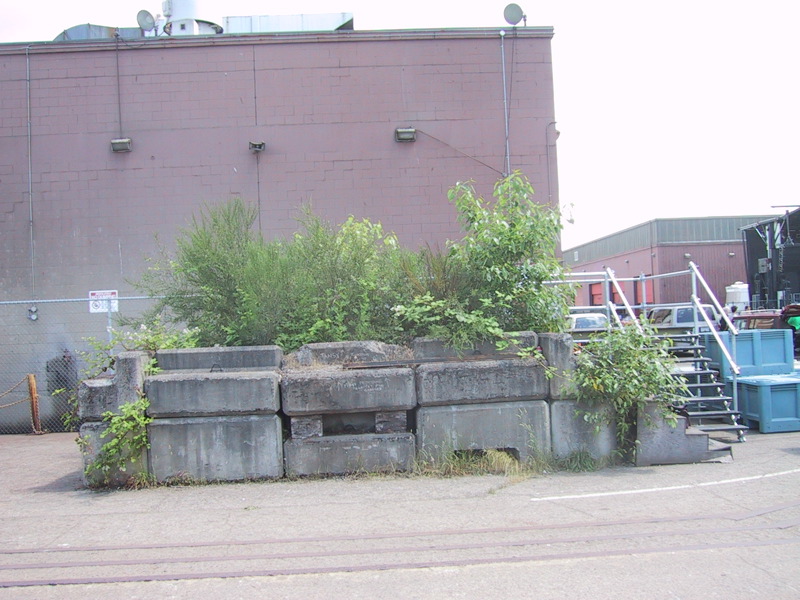Concrete Island
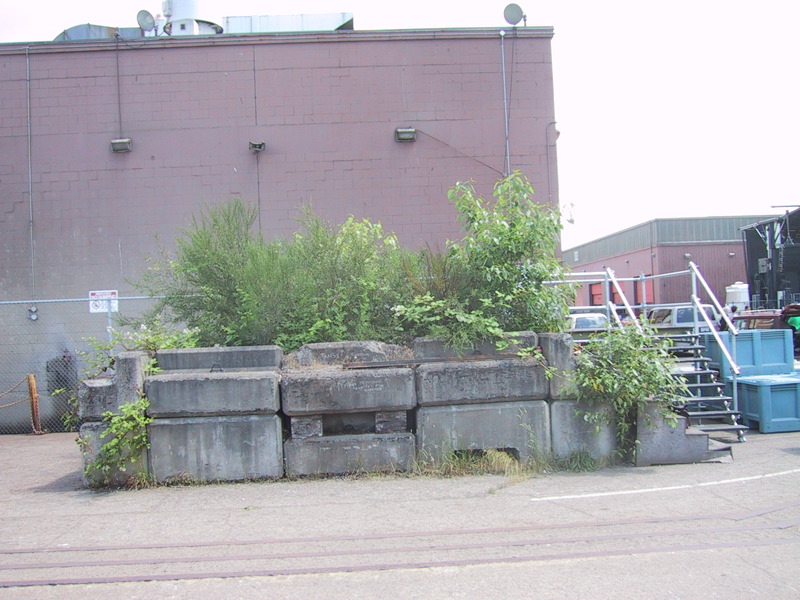
What is it about weeds? Ubiquitous yet seemingly out of place, they challenge our fantasy of control over nature. We’re told they ‘take over’ and they often do. After all, weeds are nature’s great survivors. They thrive on disturbance, colonizing the cracks in our not-so-perfect world.
As part of the 2006 World Urban Forum in Vancouver, I was asked to design an installation of land art to highlight the themes of sustainability and urban greening. I decided to approach the problem by asking myself the Zen question: “What can I not do?” The idea of hauling plants and materials from my remote studio for display in what was planned to be a temporary installation, seemed to me antithetical to the principles of sustainability. So I started to wonder about the possibility of a kind of ‘anti-horticulture,’ which might draw upon the processes of regeneration already embedded in the urban landscape. Architecture is after all, ephemeral, at least in the long run, and an entire class of organisms has evolved for which the built environment is just so much slow-release fertilizer.
The first in line are the so-called ‘weeds’ or more specifically, the ruderal (ruin loving) species, which are poised to jump into almost any urban interstice just as soon as we turn our backs. These hardy interlopers start immediately to build soil and absorb toxins from their man-made substrate and before we know it, the stark outlines of urban structure become softened by their vegetative rampancy. Gradually, more niches are created for successive waves of newcomers, each with a role to play in the establishment of a more complex ecology, culminating perhaps in a ragged woodland or a tree-braided, post-industrial savannah.
Perhaps not surprisingly, I found this process to already be well underway in a disused corner of the site where the exhibition was going to be held - the vast paved, yard of a former heavy equipment plant. When I visited there to do some reconnaissance, I was delighted to find a community of weeds flourishing inside a kind of rectangular corral made of ferro-cement traffic barricades (whose original function I never did discover.) Garbage and debris had been accumulating there for quite some time, providing enough texture for Scotch Broom (Cytisus scoparius), Cottonwood (Populus balsamifera ssp. trichocarpa) and Himalayan Blackberry (Rubus discolor) to take root, as well as a variety of grasses, herbaceous weeds and mosses.
I was struck by how this seemingly random assemblage of Asian, European and native British Columbian plants reflected the human history of the surrounding city. We too are an opportunistic species, always on the move and on the look-out for new niches. Weeds, in effect, are us.
Migration however can engender controversy, and it is interesting to note the similarity in the racialized invective that is often launched against human immigrants, with that directed at immigrants of the botanical variety, particularly when they begin to begin to flourish in our midst without the need for cultivation. The campaign against Scotch Broom in British Columbia can at times resemble a pogrom. Every spring, self-appointed gangs of ‘broom-busters’ and ‘road guardians’ fan out across the hinterlands of Vancouver Island to effect a kind of botanical ethnic cleansing. While admittedly destructive to some ecosystems, Scotch Broom often declines over time as it is vulnerable to the shade of native trees if they are allowed to re-establish themselves naturally. It was easy to see the native Cottonwood thriving alongside the Scotch Broom within the confines of the Concrete Island. But the processes of forest succession are lugubrious and patience has never been our species’ strong point. In the impoverished terrains vagues of highway embankments and strip mall parking lots, Scotch Broom performs valuable services, adding nitrogen to the soil using symbiotic bacteria that live on its roots, as well as attracting pollinating insects. In these places, broom’s lemon yellow flowers are often the only splash of colour in an otherwise dreary continuum. I’ve always felt we should cut broom a little more slack.
Many of the other ‘weeds’ on the Concrete Island had similarly complex attributes, serving as a kind of countervail to their blanket designation as ‘noxious’. I felt they needed to be ‘redeemed’ in some way, so I set about recording a cell-phone guided audio tour to the Island’s flora, highlighting some of the interesting narratives embedded in what might otherwise seem a rather ignominious corner of the city. I installed little botanical labels next to the various plants I wanted to bring attention to, listing the common and Latin names and which option to push on a toll-free number connecting the visitor’s cell phone with the relevant audio recording. Many of the visitors made use of the service, though more than a few stood gazing out over the weed patch, just scratching their heads.
As a land artist, Concrete Island afforded me some valuable lessons. My work in the past had often focused on strategies of botanical intervention, yet here I was content to simply frame a process that was already underway. Nature, even when we disturb it, shows a superior intelligence and is always full of surprises. Despite being surrounded by acres of pavement, animals managed to find their way to the Concrete Island. As one might expect, I found insects such as hover flies, bees, and ants flitting and scrabbling through the vegetation But I was amazed to witness, on more than one occasion, native White-crowned sparrows happily foraging among the broom bushes, underscoring for me the realization that there is much more to the interplay between native and exotic species than our cultural predispositions might first have us believe.
Link to google maps location here.
Slide Show:
Concrete Island Installation View
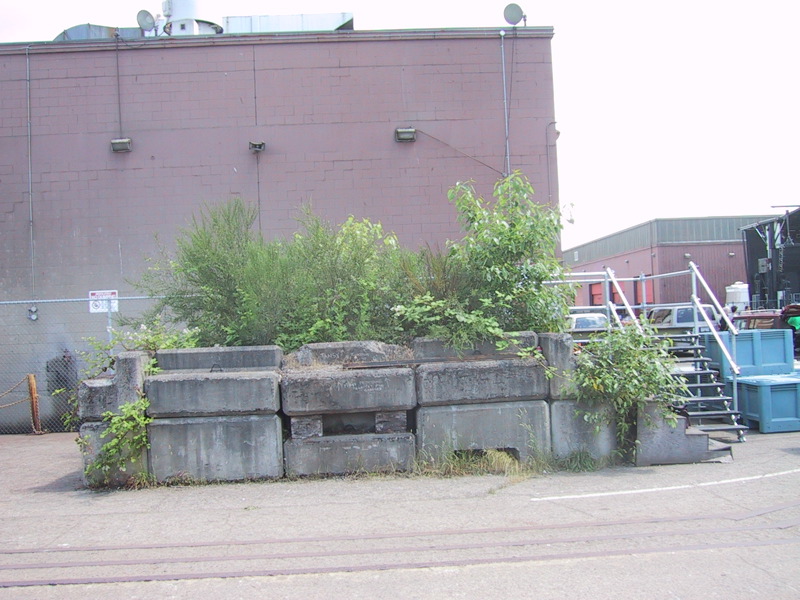
This shows the Concrete Island in context. It was located in the parking lot of the former Finning Plant on Vancouver's Great Northern Way.
Concrete Island LS
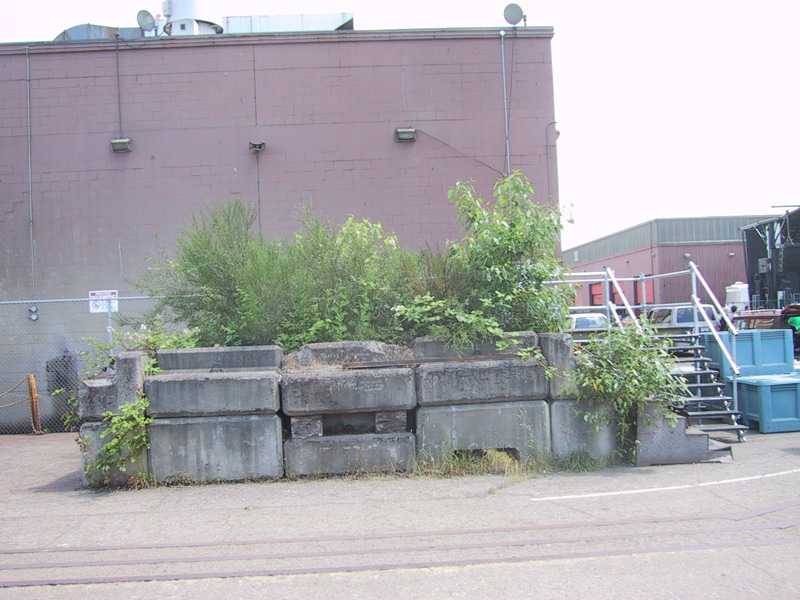
Long shot of Concrete Island showing surrounding pavement
Concrete Island Ruderal Vegetation
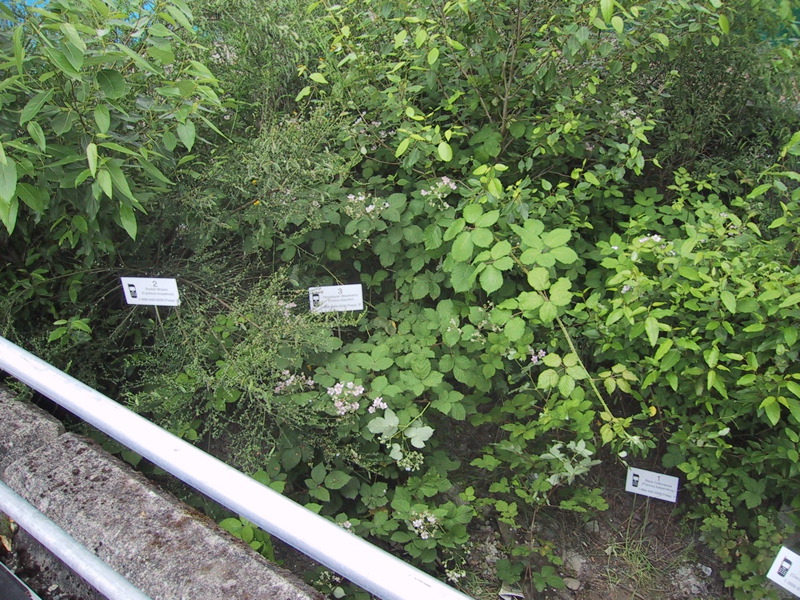
A view of some of the vegetation thriving inside the Concrete Island. Visible are (left to right): Scotch Broom (Cytisus scoparius), Himalayan Blackberry (Rubus armeniacus) and Black Cottonwood (Populus trichocarpa).
Epilobium (Fireweed)
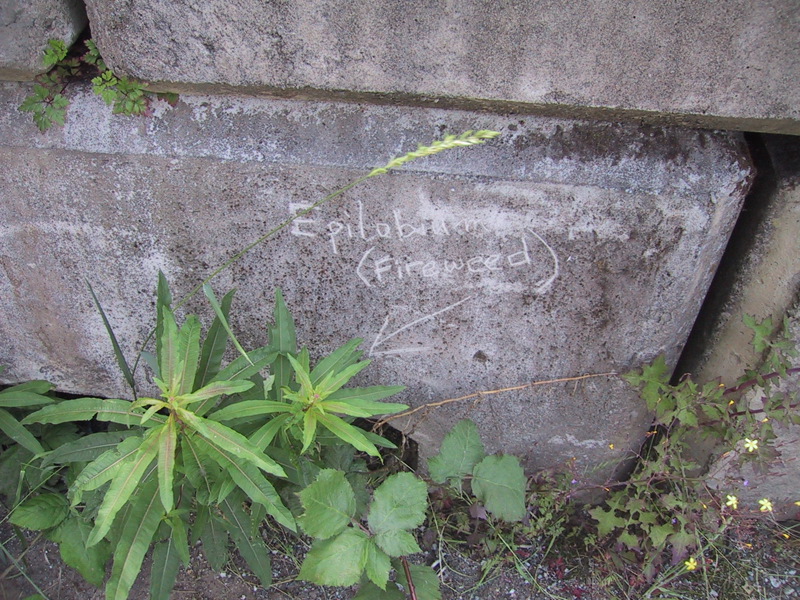
Epilobium (Fireweed) weed graffiti
Installation shot corner
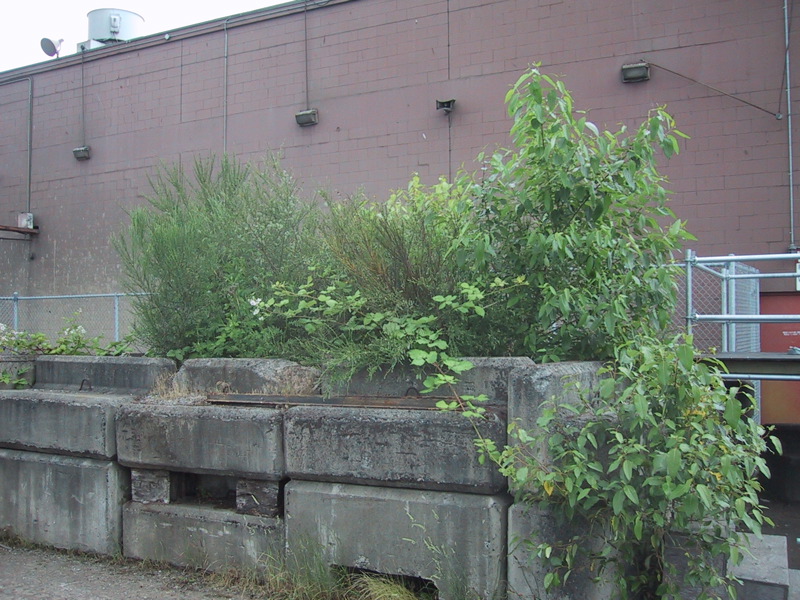
another view
Moss and Grasses
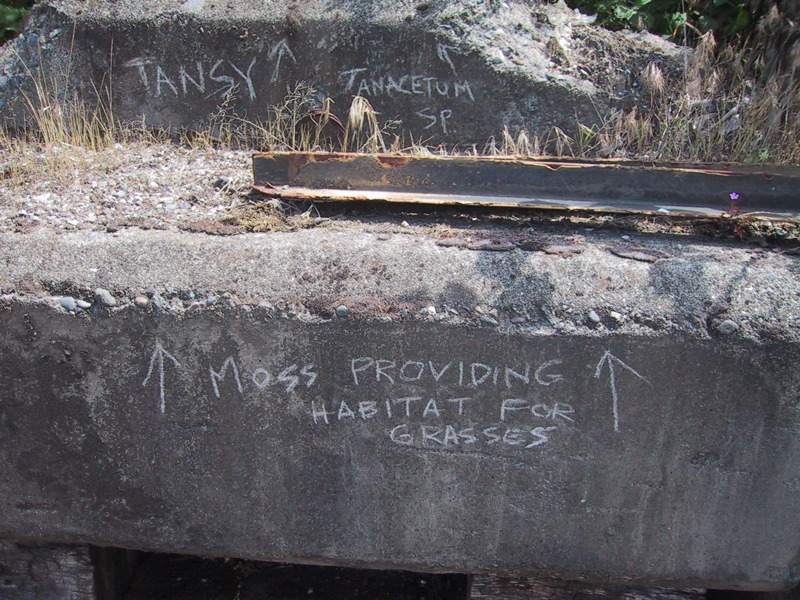
Moss and grass weed graffiti
Plantago lanceolata
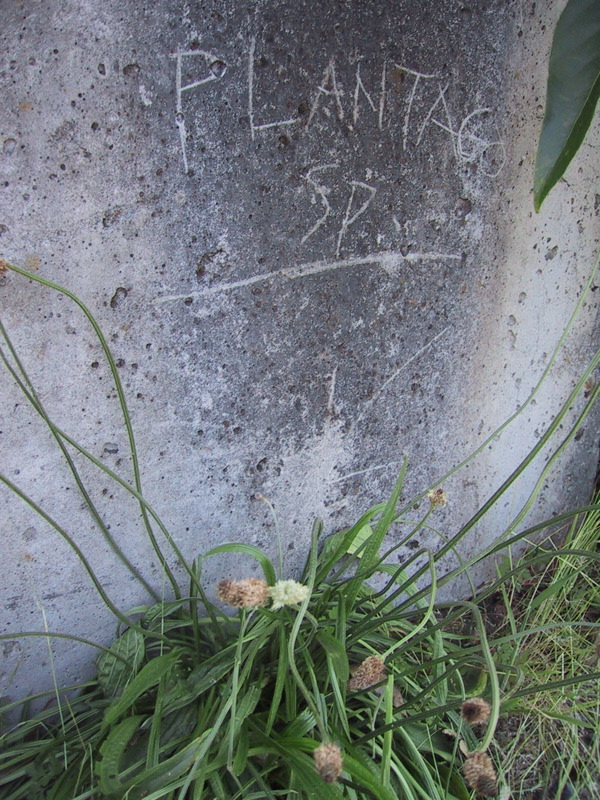
Plantago lanceolata weed graffiti
Tanacetum (tansy)
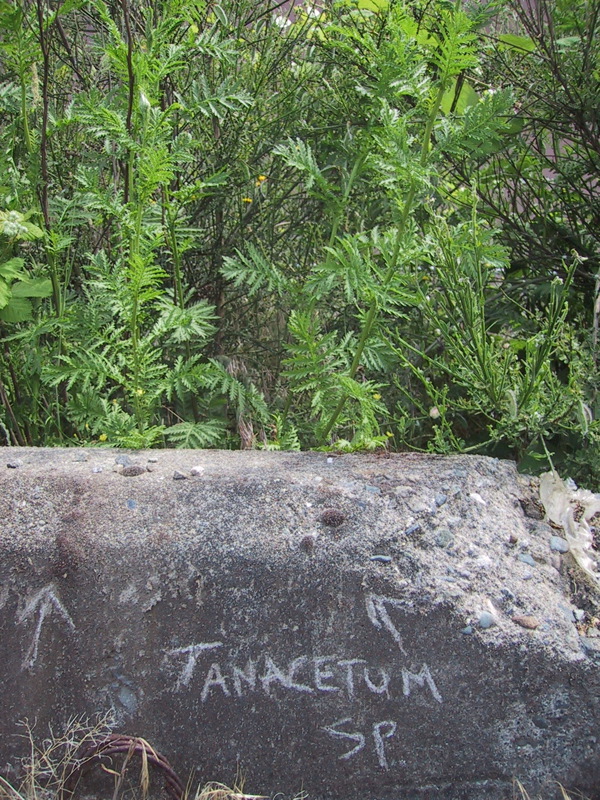
Tanacetum (tansy) weed graffiti
White Crowned Sparrow
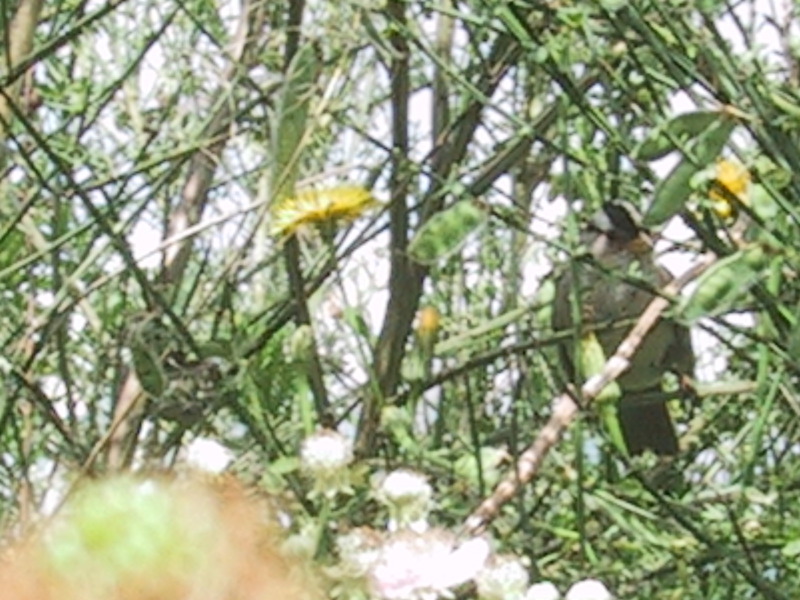
Despite its tiny size, the Concrete Island is often visited by birds such as this native White-crowned sparrow (Zonotrichia leucophrys). I had to hide in the bushes for quite some time to get this shot
Wild lettuce
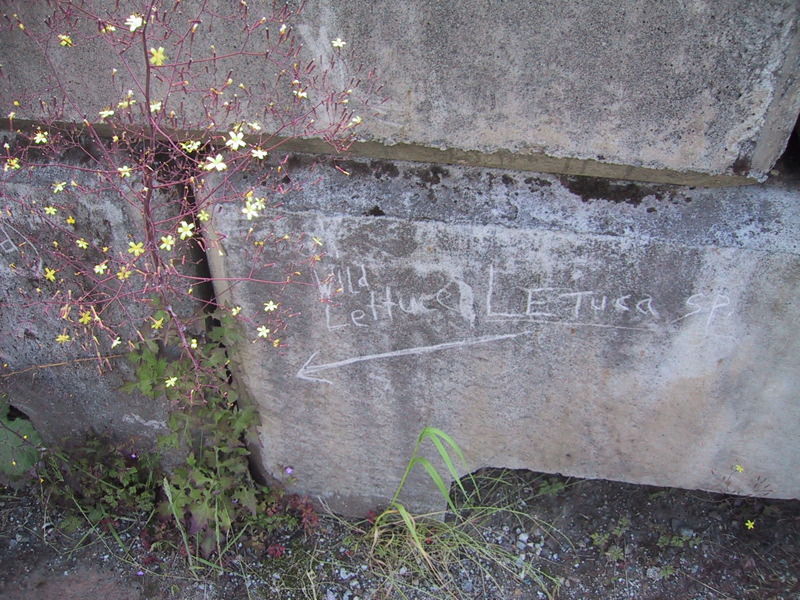
Wild lettuce weed grafitti
audio tour botanical labels
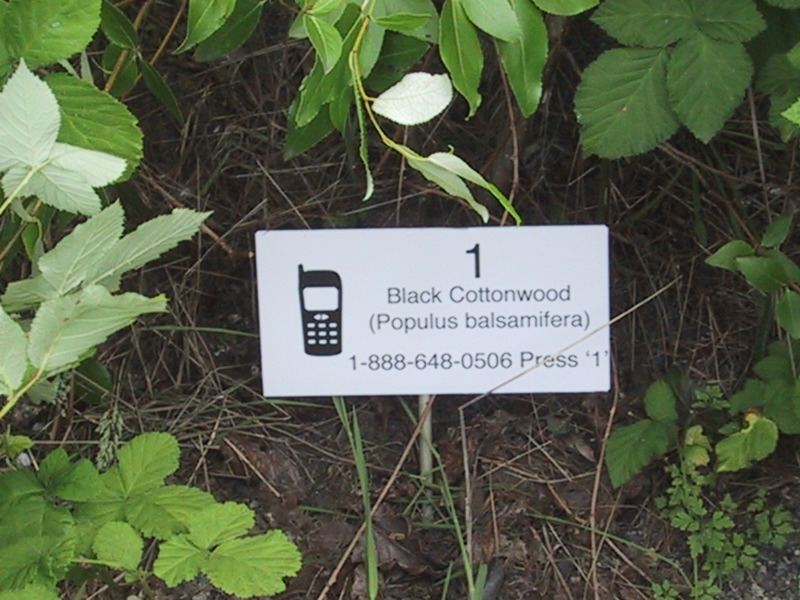
I recorded a menu-driven audio tour of Concrete Island's weed diversity that was accessible via a toll-free number displayed on botanical labels next to each plant. To my knowledge, this was Vancouver's first cell phone-guided audio tour of a ruderal ecology.
installation view with white bucket
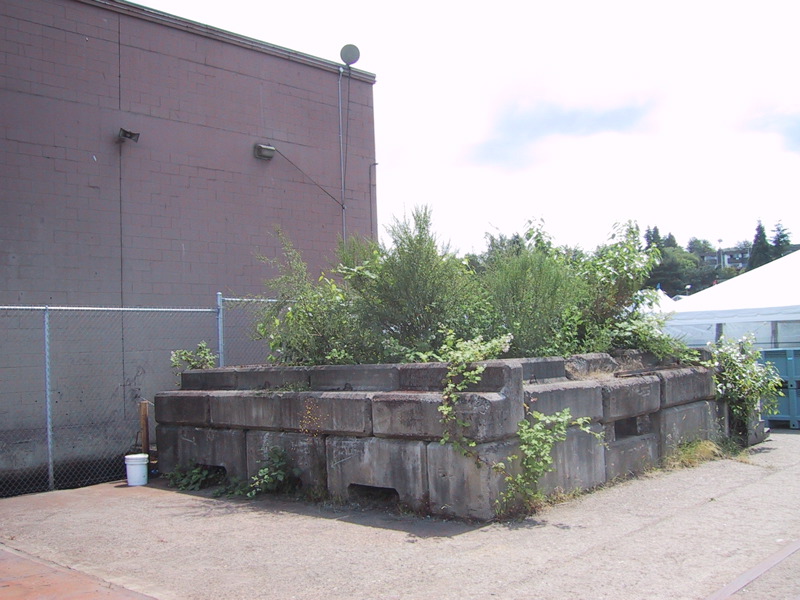
Installation view
